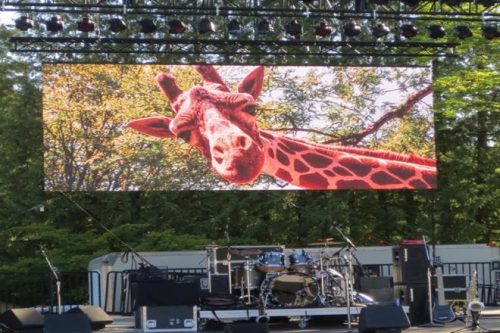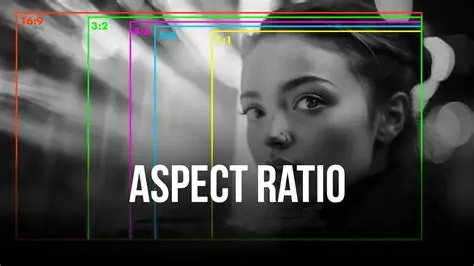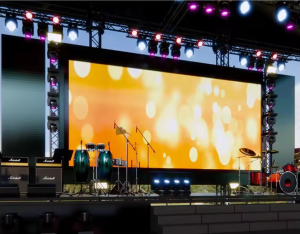
Essential for event planning: Core guide for renting LED display screens
1. What is LED Screen Rental?
LED screen rental means you are renting a large digital screen temporarily. These screens use tiny light-emitting diodes to display bright images and video. The rental can last a few hours, a full day and even a week. It depends on what your event looks like.
Renting is distinct from purchasing or leasing. With a purchase, the screen is yours forever. With a lease, you pay monthly for a long time. With a rental, you only pay for the time you use it.
Event organizers or brands typically choose to rent LED screens for:
- Outdoor concerts and festivals
- Trade shows and product launches
- Sports events and public viewing
- Weddings, churches and parties
These types of screens allow you to show advertising, play videos, stream live videos or display messages to large crowds. If you want very impressive visuals and loud impact, without purchasing expensive equipment, LED screen rental is ideal.
2. Types of Available LED Screen Rental
Not just any LED screen works for every type of event. The right LED screen rental depends on how you are using it and what you want to display. Some LED screens are designed for outdoor events and some are designed for indoor events. Some are better with speed of installation, while others arrive in store display type set-up and require more labor to build.
Let’s break down the important types of LED screens you can rent.
2.1 Mobile LED Screens
Mobile LED screens are already mounted on trucks or trailers, so you just drive, park and turn it on. This is the best option for speed, as it is usually difficult to set up an outdoor screen without stands, frames, and tools. Some are fully self-contained with built-in speakers, power, and control.
These are best for outdoor events where time is limited and space is plentiful. You will often see mobile LED screen rental being used in situations such as:
- Outdoor movie nights
- Marathons and parades
- Roadshows or political rallies
- Parking Lot Concerts
Mobile LED screen rental is so lightweight and portable. They offer quick installation, making them ideal when you want a big bang for your buck, fast.
2.2 Modular Panel Screens
Modular LED screens are made of several panels. They connect to form a larger screen. There are limitless shapes to create (wide, tall, curved, and square). They are ideal for:
- Trade show booths
- Large indoor events
- Pop-up stores
- Custom stage designs
Although modular screens take longer to build and set up than mobile LED screens, they provide a little more flexibility when it comes to shape, options, and size. LED screen rentals are the best option when you want something unconventional and unique.
2.3 Stage & Event Screens
These types of screens are made for live shows/concerts, and theater. Stage LED screen rental is generally positioned behind performers or DJs, and display live video or moving graphics/animations. You will see them at places like:
- Music Festivals
- Dance contests
- Theater performances
Stage screens are brilliant and sharp and offer the ability for everyone in the audience to see the screen, traveling far distances from the stage.
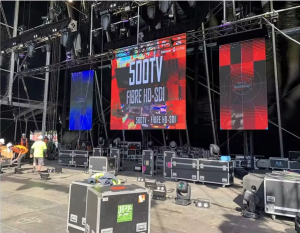
2.4 Indoor vs Outdoor Displays
Outdoor LED screens are made for harsher weather. They need to be bright enough to see in bright sunlight and sealed enough to keep the rain and dust out.
Indoor LED screens are lighter and appear clearer with closeup viewing. Indoor screens are great for:
- Trade shows
- Business meetings
- Product launches
3. Technical Specs You Should Know
It can be valuable to familiarize yourself with important terms before selecting an LED screen rental. These specs tell you how the screen will act and if it is right for your event. Knowing the specs means you will get better results without surprises.
3.1 Pixel Pitch
The pixel pitch is the distance between two little lights (pixels) on the screen. A small pixel pitch means the pixels are closer together. This creates a sharper image.
Suppose people are going to be in very close proximity to the screen, like a meeting or trade show-go with a low pixel pitch like 2.6mm. Text and images will look clean with a low pixel pitch. If you are doing an outdoor event where you will only be looking at the screen from a distance. It will look fine with a higher pitch like 4.8mm.
3.2 Brightness (Nits)
The brightness of the screen is measured in nits. The higher the number of nits, the brighter the screen will be. This matters most for outdoor usability.
3.3 Better Image Detail
The display’s ability to create deeper blacks and whiter contrasts can simulate the natural contrasts found in real world environments. This will make the viewing experience more immersive.
If your screen will be used in the sun or bright conditions, you will need 4,000 to 6,000 nits. For indoor events, 800 to 1,200 nits will usually be enough.
By using a screen that is not bright enough for daylight, your audience may not see your content. Always ask your rental company what level screen will work best.
3.4 IP Rating (Water and Dust Protection)
“IP” stands for Ingress Protection. It indicates how well water and debris tolerate the screen. An IP65-rated LED screen can be used in the rain without worry. This is ideal to use for concerts, festivals, or sporting events. Indoor screens do not require a high rating – they will always be clean and dry!
3.5 Aspect Ratio & Modularity
The aspect ratio is the shape of the screen. For example, 16:9 or 4:3. A good fit ensures your videos and images won’t be stretched or cut off.
Modular LED screen rental has panels, and you can assemble the panels to fit almost any shape. It allows for greater flexibility for custom stage designs, event booths, or even curved displays.
3.6 Size Matters
Larger screens will gain your audience’s attention. But the larger the screen, the more expensive and more power it will use.
Larger LED screen rental is good for large rooms or outdoor fields, and giant LED screen rentals or large LED screen rental are suitable for stadiums or large events.
It would help if you considered screen size to get your message across clearly – without paying for extra size.
4. LED Screen Rental Pricing Breakdown
How much does an LED screen rental cost? There are a few factors to consider – size, event duration and location.
Most companies charge by:
- Square foot (price per area of panel involved)
- Day or event (fixed rate for the day)
- Setup and support (extra if you need help on site)
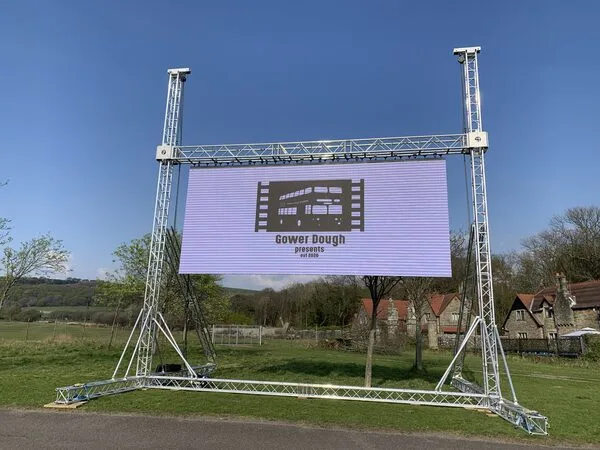
What Affects the Price of Renting LED Screen?
The following list shows the main contributors to higher your price.
- Screen Size: Bigger screen = bigger cost. A small indoor screen might cost $800 to $1200 a day. On the other hand, a large outdoor screen is $3000 or more.
- Pixel Pitch: Higher quality (lower pixel pitch = sharper screen) costs more than average quality. Higher quality is better for shorter viewing distances.
- Duration of Event: One-day rental costs less. If your event is more than one-day it will cost slightly more.
- Location: Some areas will charge more for delivery and setup depending on the location. A city will charge more than a local area.
- Support Services: Running the screen, live stream, or set-up crew – cost more.
5. Advantages of Renting Rather Than Buying
Buying an LED screen may seem like a good decision—until you check the cost. Good screens can cost thousands of dollars, even tens of thousands. That’s why most people select the rental option instead. It saves time and money, and gives you more options.
Here are the four best reasons to rent instead of buy.
5.1 Lower Up Front Cost
When you buy a screen, it is an investment. If you are only going to use it for one or two events, it is hard to justify the expense.
Renting allows you to have the same screen that will be of equal quality to the one you wanted to buy for a much lower price. You only pay for what you use it for, regardless if that’s a few hours, a whole day or a weekend.
5.2 No Storage or Maintenance
With ownership comes responsibility. If you own a screen, you will be responsible for its care. This includes: repairs, updates, upkeep, cleaning, plus finding a space for it when it is not in use.
With a rental, the screen provider assumes all of that responsibility. They will deliver it to your event, set it up for you, and strike it once your event is done. This means you don’t have to worry about it breaking or how to store it.
5.3 More Flexibility for Events
Every event is different. When you rent your screen, you have the flexibility to choose the right screen for each event.
Need a small indoor screen this week, and a large one the following month for a giant outdoor event? No problem. Rentals provide flexibility depending on your venue, audience size and your content.
5.4 Access to the Latest Technology
The technology associated with LED screens keeps getting better. They are becoming lighter, thinner, and less expensive.
6. Use Cases & Application Scenarios
Displays can be utilized in virtually any scenario. Whether your audience is large or small, screens help relay information in an uncluttered manner, capture people’s focus and attention, and give the audience elements to keep their focus on. Screens can be used inside or outside, and for entertainment, business, or safety purposes.
Here are some of the typical ways that people employ such technologies.
6.1 Corporate Events and Product Launches
Businesses utilize displays to show video, slides of speakers, or provide live updates. Displays are positioned on stage or around the event space. Displaying images and messages on screens can support your brand’s image of being current and professional. It provides every guest an experience of the event, even if they are sitting well back from the action. Displays also provide a mixture of interest and organization during product launches.
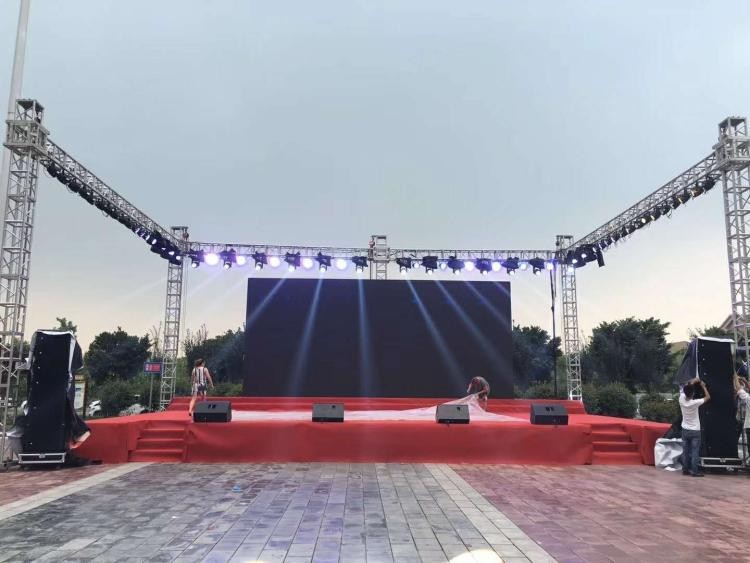
6.2 Concerts, Sports, and other Live Events
Live practices eventually need big visuals. LED screen rental for stage use are mainly used for close ups of performers, live feed music, or animations. Sports events also carry core expectations of displaying scores, replays, and sponsors logos via screen. Again, fans sitting at the back of the venue, or simply far away from the performance, could still see everything.
6.3 Trade Shows and Exhibitions
Displays enhance booth experiences. Using displays provides your booth an advantage. It includes grabbing more attention, even to prepare product demo videos, advertisements, or slideshows. This quickly differentiates you from anything else in the potential customer’s mind, and also conveys your offer in a quicker period, without lengthy conversations.
6.4 Power Pop-Ups and Merchandising
Retail pop-ups will use LED displays for coupons and promotional messaging.
Audiences are attracted visually through motion rather than paper. This motion keeps patrons present and draws them into your retail space.
6.4 Festivals and Crowds
Festivals and fairs also use screens for;
- Visuals from cameras
- Information from sponsors.
- Event times
- Safety messages
This keeps movements connected and truly engages your attendees with all rabbit holes explored.
7. What is the LED Screen Rental Process
Getting an LED rental is much easier than you would think. Most rental service providers have a very simple process to move you from inquiry to the end as described below.
The standard organized rental process is as follows:
7.1 Inquiry/Needs Assessment
The first step is to let the rental provider know your request. The rental provider will want to know what type of event you are planning, the location of the event, the expected audience number, and what you are trying to accomplish with the screen.
This will help your rental provider be able to recommend the best place to locate the screen and a screen that will fit your space and budget.
7.2 Recommendation/Quote
This is where all the fun begins. The rental provider will make a recommendation for the screen that would fit your needs like mobile, modular, or stage screen, and provide a quote. In most cases, the quote will generally include delivery, set-up and breakdown.
7.3 Contracts/Deposit
After acceptance of the quote, you will be required to sign a short contract that acknowledges your acceptance. Most rental providers will ask for a deposit to secure your date and equipment.
7.4 Content Planning and File Submission
You will send your video, images or slides in the correct format. If you’re uncertain about what works, they will assist you.
Some also assist with designing or testing your content.
7.5 Delivery, Setup, and Operation
On the event day, the team will bring the screen, set it up and run a test.
For large events, they will remain and run the screen live, along with camera feeds, videos or live messages.
7.6 Teardown and Follow-up
Following the event, the crew will pack up and inspect for issues. Some companies will ask for feedback or offer a discount for your next rental.
8. Tips for Success with Your LED Screen Rental
You want your screen to look as good as possible, and you want every aspect to work smoothly. These simple tips can help you maximize the value of your LED screen rental.
8.1 Think About Wind and Light
If your event takes place outside, check the extended forecast. Choose a screen that is bright enough for sunlight, and waterproof or can be adequately protected from rain.
8.2 Use High-Resolution Content
Blurry videos and stretched images are an eyesore. Be sure that your content is sharp and sized for the screen area.
Ask your rental company what format to use, and they may help you by testing the content as well.
8.3 Plan Live Feeds or IMAG
If you are displaying speakers, performers, or sports, a live camera feed is highly impactful. This is called IMAG, or Image Magnification. It lets people way far away from the stage feel like they are sitting right there.
8.4 Add Simple Interactivity
Use QR codes on screen to allow attendees to scan for additional information; you can even display social media walls to show live posts. This allows for higher engagement and it adds value to your event.
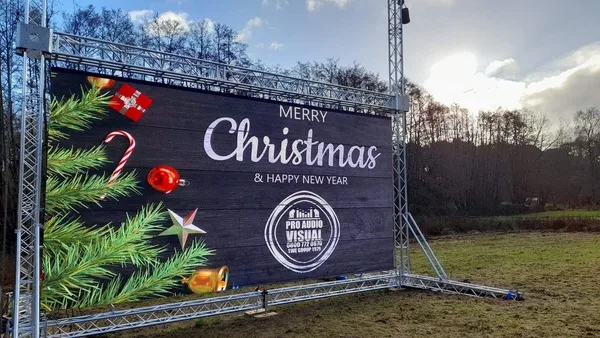
9. Conclusion
Renting an LED screen is one of the best ways to upgrade your event. You will have bright images, and easy options for room layout and far less cost compared to purchasing a screen. If you rent an LED screen from the right company, your experience will be easy, reliable, and visually impressive from start to finish.
